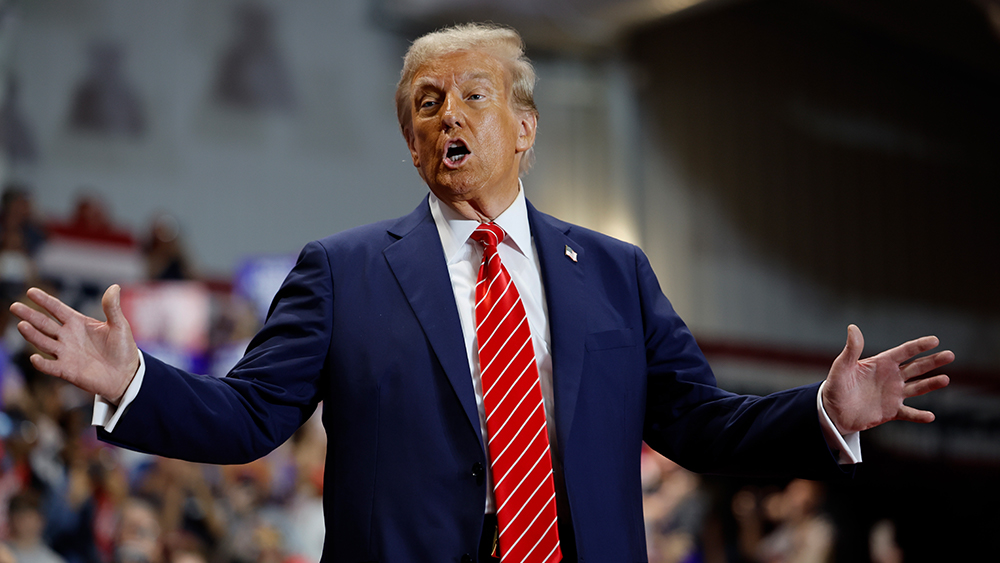
The South China Sea continues to be a region of contention and a potential flashpoint for a major conflict between the United States and China, and Washington's reaffirmation that attacks on Philippine vessels in its claimed waters constitutes grounds for activating the U.S.-Philippines Mutual Defense Treaty is expected to aggravate the situation. (Related: U.S. forming anti-China "squad" with Japan, Philippines and Australia.)
"We're now allocating an additional $500 million in foreign military financing to the Philippines to boost security collaboration with our oldest treaty ally in this region," said U.S. Secretary of State Antony Blinken. "We stand by our ironclad defense commitment to the Philippines under the Mutual Defense Treaty. That extends to armed attacks on Filipino armed forces, public vessels or aircraft – including the coast guard – anywhere in the Pacific, including the South China Sea."
Philippine Defense Secretary Gilbert Teodoro called the aid a "tremendous boost" to the country's defense capabilities, while Foreign Affairs Secretary Enrique Manalo thanked Blinken for America's commitment to the longstanding U.S.-Philippine defense alliance.
Blinken, along with Defense Secretary Lloyd Austin, visited Manila as part of the administration's Asia Pacific tour aimed at reaffirming Washington's commitment to its allies in the region in a bid to oppose the "strategic challenge" posed by Beijing.
The two U.S. officials traveled to the Philippines after visiting Japan, where they announced measures to boost the U.S.-Japan military alliance, including a revamping of the U.S. military command center in the country. The U.S. is also pushing for Japan and the Philippines to increase joint military cooperation as alliance building is key to the U.S. strategy to prepare for a future war with China in the region.
U.S. aid package to help Philippines modernize its ailing military
Blinken described the aid as a "once in a generation investment" to help modernize the Armed Forces of the Philippines, specifically the Philippine Coast Guard. Austin noted that the funds demonstrate Washington's commitment to take "bold steps to strengthen our alliance."
"We are here to build on an extraordinary foundation. We are working to advance our shared vision of a free and open Indo-Pacific," he declared. "This level of funding is unprecedented."
Blinken and Austin’s visit to the Philippines came after Manila and Beijing recently came to an agreement to ease tensions in Manila's portion of the disputed South China Sea, locally called the West Philippine Sea.
Concerns of a possible conflict have been rising in recent weeks over a Philippine Navy outpost in the Second Thomas Shoal, claimed by Manila as the Ayungin Shoal, by China as Ren'ai Jiao and by Vietnam as Bai Co May.
China and the Philippines have recently been disputing the finer details of the agreement, signaling that it may not last, and the news of renewed U.S. support for Philippine forces could embolden Manila to push harder against Beijing's demands.
Blinken and Lloyd also used their visit to Manila to reaffirm U.S. commitments to advance their shared economic priorities, including helping Manila develop different industries, including semiconductor manufacturing, clean energy, cybersecurity and the digital economy.
This comes after the U.S. and the Philippines announced other steps to boost military ties, including a pledge to sign a new intelligence-sharing agreement by the end of the year and more U.S. investment in military bases in the country. Last year, Washington and Manila signed a deal that gives the U.S. access to four more bases in the Philippines, bringing the total number of Philippine bases in which U.S. troops and materiel can reside up to nine.
Visit CommunistChina.news for more news involving Chinese aggression against its neighbors.
Watch this video of Chinese Coast Guard members swarming Philippine vessels in the South China Sea and attacking the Filipino sailors with bladed weapons.
This video is from the TrendingNews channel on Brighteon.com.
More related stories:
Chinese fighter jet flies too close to U.S. recon plane flying over South China Sea.
U.S. warns China about plans to increase military drills in South China Sea region.
Another PROXY WAR in the works? U.S. shaping the Philippines into the next Ukraine.
Philippines gives American forces access to 4 additional military bases.
Sources include:
Please contact us for more information.

















